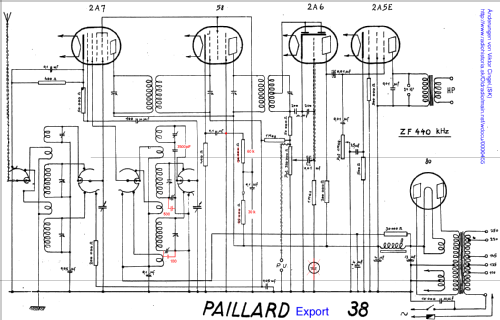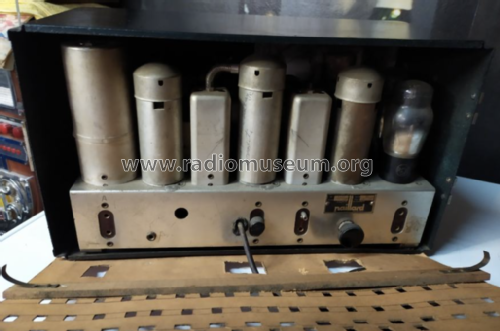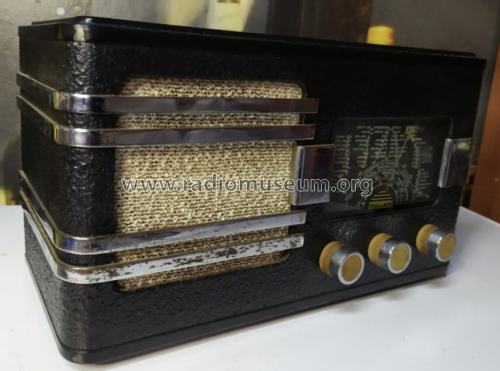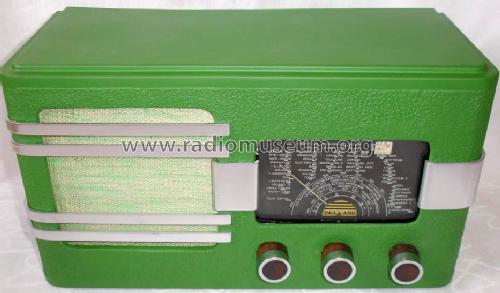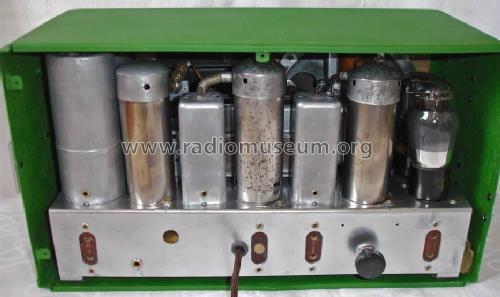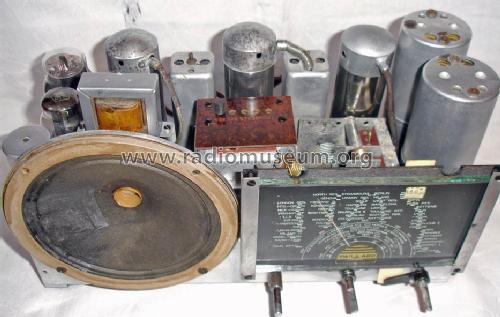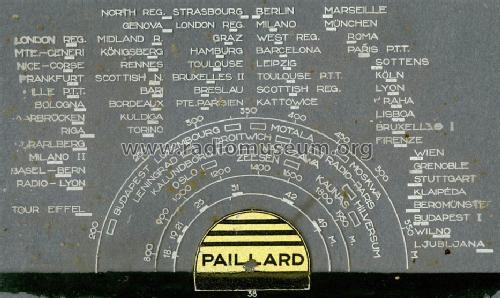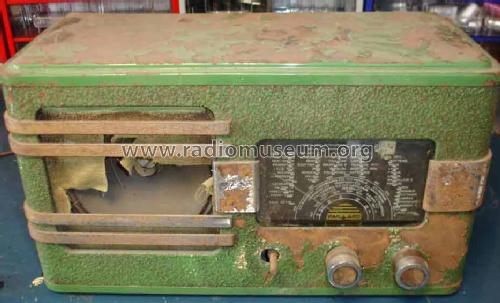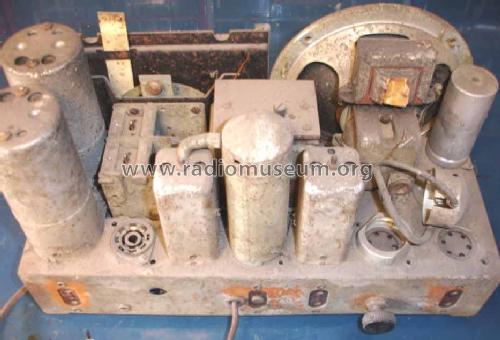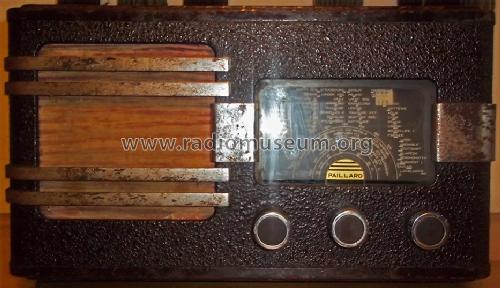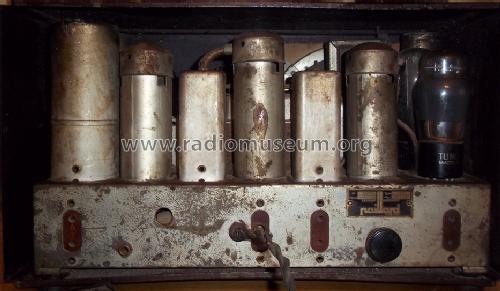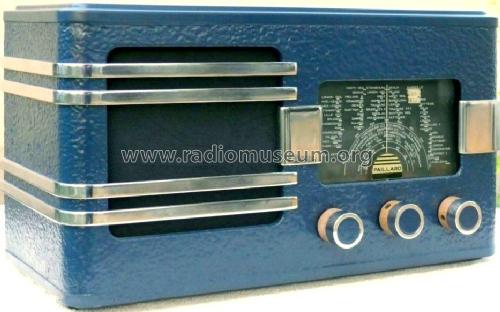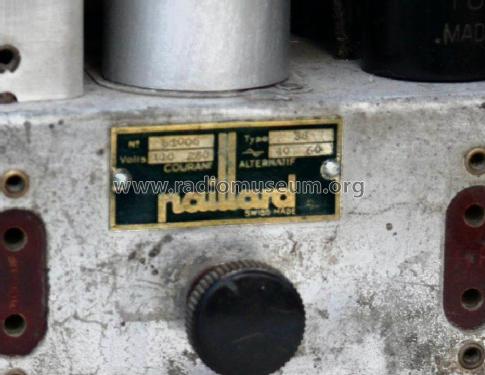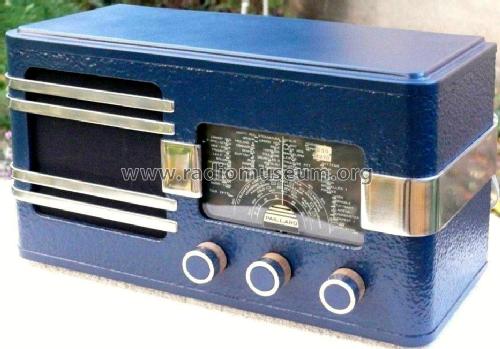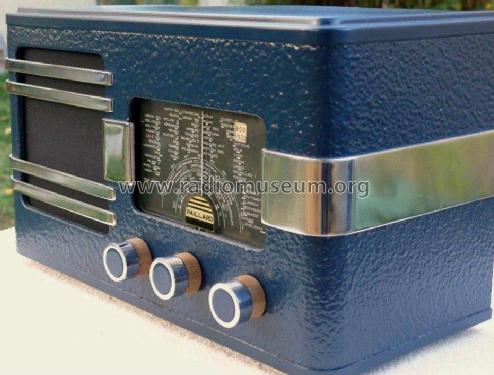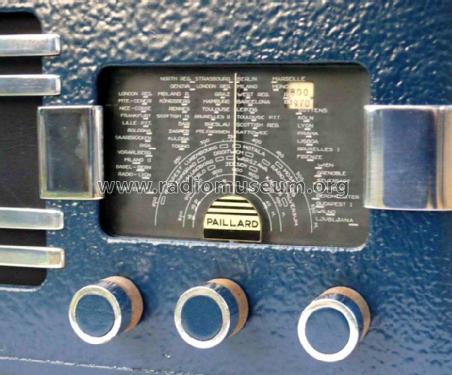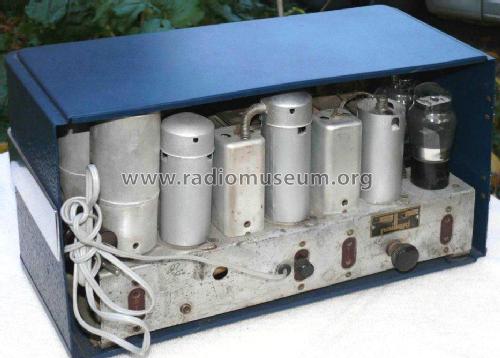Export 38
Paillard AG; St. Croix
- Pays
- Suisse
- Fabricant / Marque
- Paillard AG; St. Croix
- Année
- 1938/1939
- Catégorie
- Radio - ou tuner d'après la guerre 1939-45
- Radiomuseum.org ID
- 130578
Cliquez sur la vignette du schéma pour le demander en tant que document gratuit.
- No. de tubes
- 5
- Principe général
- Super hétérodyne (en général); FI/IF 440 kHz; 2 Etage(s) BF
- Circuits accordés
- 6 Circuits MA (AM)
- Gammes d'ondes
- PO, GO et OC
- Tension / type courant
- Alimentation Courant Alternatif (CA) / 110; 125; 145; 220; 250 Volt
- Haut-parleur
- HP dynamique à électro-aimant (électrodynamique)
- Matière
- Boitier métallique
- De Radiomuseum.org
- Modèle: Export 38 - Paillard AG; St. Croix
- Dimensions (LHP)
- 385 x 215 x 170 mm / 15.2 x 8.5 x 6.7 inch
- Remarques
- Dieses Modell "Export" (38) entstand auf Grund eines Gerätes aus der Republik Slowkei (Slovakia) in sehr schlechtem Zustand. Klar erkennbarwar aber, dass es sich um das gleiche Chassis wie beim 38TR handelt. Die Wellenbereiche sind LW 800 - 1970 m, MW 200-560 m und KW 17,5 - 51 m. In Ermangelung eines besseren Bildes haben wir die uns zugestellten genommen. Unterlagen für das Modell 38TR haben wir von Januar 1938. Modell 28TR und 38TR können demnach schon im Weihnachtsgeschäft 1937 auf dem Markt gewesen sein, doch haben wir keine Beweise dafür. Mallory-Zelle für die Gittervorspannung ist zu beachten!
- Poids net
- 8.6 kg / 18 lb 15.1 oz (18.943 lb)
- Source extérieure
- Viktor Cingel, Slovakia
- Auteur
- Modèle crée par Ernst Erb. Voir les propositions de modification pour les contributeurs supplémentaires.
- D'autres Modèles
-
Vous pourrez trouver sous ce lien 552 modèles d'appareils, 270 avec des images et 303 avec des schémas.
Tous les appareils de Paillard AG; St. Croix
Contributions du forum pour ce modèle: Paillard AG; St.: Export 38
Discussions: 1 | Publications: 1
Viktor Cingel:
The schema is drawn in the position of SW,
switch up is for MW and down for LW (as in the original set)
Resistance of input winding of power trafo: 48 Ohm, secondar 2x500Ohm.
Resistance of dynamic winding in laudspeaker 2560 Ohm.
I has to repair thickler for SW: 5 windings, and tuned SW winding (8 w)in oscillator was cut, so this indicated that during the war someone destroyed SW,
which was at that time done in our countries.
If was tuned for 420Khz, in a very good conditions, so I did not touched it.
The input cuircuits as well oscillatro were tuned as described on dial.
The grill damaged, but from a fragment which I found in radio, a copy
was done using very similar grill, colored by green pastel.
The knob is made from wood, with iron ring, a replica was done just from wood
and ring is painted.
The schema is drawn in the position of SW,
switch up is for MW and down for LW (as in the original set)
Resistance of input winding of power trafo: 48 Ohm, secondar 2x500Ohm.
Resistance of dynamic winding in laudspeaker 2560 Ohm.
I has to repair thickler for SW: 5 windings, and tuned SW winding (8 w)in oscillator was cut, so this indicated that during the war someone destroyed SW,
which was at that time done in our countries.
If was tuned for 420Khz, in a very good conditions, so I did not touched it.
The input cuircuits as well oscillatro were tuned as described on dial.
The grill damaged, but from a fragment which I found in radio, a copy
was done using very similar grill, colored by green pastel.
The knob is made from wood, with iron ring, a replica was done just from wood
and ring is painted.
Heribert Jung, 11.May.08
